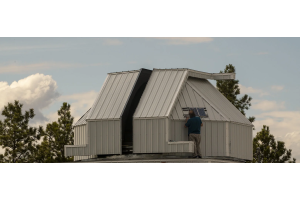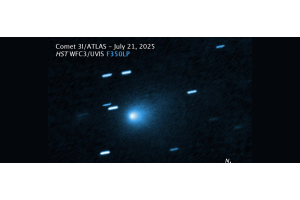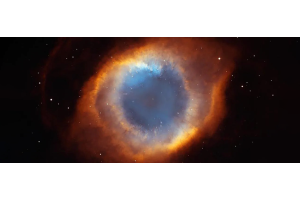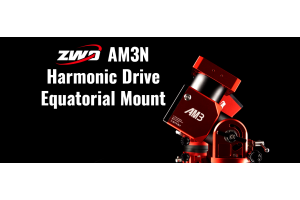
In this episode of What's in the Sky this Month, Teagan reviews some of the beautiful celestial objects you can see in the month of September!

Image credit: ESA/HUBBLE, CC BY 4.0/WIKIMEDIA
Saturn & Neptune at Opposition
Both Saturn and Neptune reach opposition this month, with Saturn being first on the 8th. At magnitude 0.6, it’s much brighter and easier to find than Neptune but is actually a little fainter than it would normally be compared to other oppositions. The reason for this is because its rings are nearly edge-on to us. When the rings are wide open, they’re able to reflect more light, but when the rings are closed, less light is reflected, and the planet appears dimmer.
All the same, the planet is unmistakable, as it shines with a bright, pale yellow light that helps it to stand out from the fainter background stars of Aquarius. Neptune is not so lucky. It reaches opposition on the 20th but glows at a relatively faint magnitude 7.8. It’s currently nearly two degrees north of the stars 27 and 29 Piscium, and is noticeable thanks to its steady, blue light.
OUR NEAREST NEIGHBORS
Venus is easily seen in the west from about 15 minutes after sunset and is joined by a crescent Moon to its lower right on the 4th and then to its left on the 5th. Saturn and Neptune reach opposition this month, making it an excellent time to observe them both. The nearly full Moon appears to the right of Saturn on the 16th. Uranus is now rising before midnight but is best seen in the early hours. It remains within the same binocular field of view as the Pleiades in Taurus and will be closest on the 1st when five and a quarter degrees separate the two. Jupiter and Mars also start in Taurus, but Mars moves into Gemini on the 5th. Both are brightening, but at magnitude -2.4, Jupiter far outshines the red planet. The last quarter Moon hangs above Jupiter on the 23rd and then above Mars on the 25th. The smallest planet, Mercury, can be seen hovering over the eastern horizon at around 15 minutes before sunrise for most of the month, with a thin crescent Moon four degrees to its left on the 1st. The Moon is new on the 3rd, and the Full Harvest Moon occurs on the 18th.

Image credit: Davide De Martin & the ESA/ESO/NASA
NGC 7000 - The North America Nebula
Although NGC 7000 lies very close to Deneb in Cygnus, it’s a challenging target for naked eye and binocular observers. However, its distinctive shape is easily identifiable in images, making it a popular target for astrophotographers.

Image credit: Antoine & Dalia Grelin via Galactic-Hunter.com
Messier 39
A fine open star cluster that can be found by star-hopping north from Deneb. It’s visible to the naked eye under dark skies and takes on a triangular shape when observed with binoculars. Telescopes show a sparsely scattered cluster with a pair of stars at its center.

Image credit: Bernard Hubl
Messier 2
A bright globular visible with binoculars, it’s located just under five degrees north of Sadalsuud, the brightest star in Aquarius. It can be detected with binoculars, while a telescope with low magnification will show a large, bright core.

Image credit: NASA / ESA
Messier 15
Very easily found within the same binocular field of view as Enif, in Pegasus, M15 also shows a large, bright core, with some resolution being possible at magnifications of 100x or more. A nearby 6th magnitude star, HR 8231, can be used for focusing.
STELLAR CONCEPTS
Opposition: An object (typically a planet or asteroid) is said to be at opposition when it is directly opposite the Sun in the sky. In this position, the object rises at sunset, is due south at around local midnight and then sets at sunrise. Since the object is also closest to Earth at that time, it’s at its brightest and appears largest through a telescope. This makes it the perfect time to observe the object visually, and for astrophotographers to image it.










